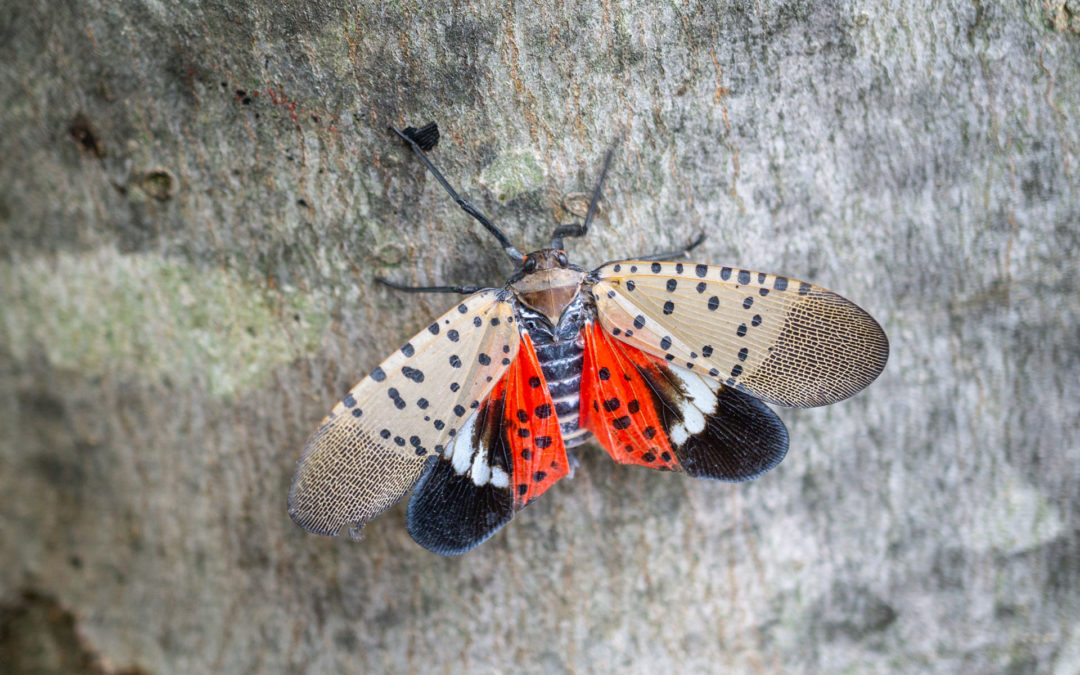Actually, they’re already here. Lanternflies, an invasive Asian insect that looks similar to a moth and feasts on more than 70 types of plants and crops, were recently spotted in Maryland. This sighting comes four years after first being seen in Pennsylvania, where the population has exploded and is projected to cause $18 billion in damages.
Not only can these pests destroy massive amounts of crops very quickly, but they can also go after hardwood forests, threatening the lumber industry. Lanterflies tend to travel in large hordes, sometimes numbering in the thousands, feasting on plant and tree sap and excreting a sticky goo that essential suffocates their victims.
While lanternflies don’t necessarily pose as much of a threat to homes specifically, they can still certainly destroy some trees you may have on your property, including oak and pine trees. Luckily, they’re fairly easy to identify, thanks to their very unique markings. According to a horticulturist with Penn State Extension, 98 percent of the people reporting sightings have correctly identified the insect.
The lanternfly changes appearance as it goes through five developmental stages. In the first stage, which lasts only a few weeks, it will be shiny, black, and covered with white spots. The spots become bright red by midsummer. By adulthood, the lanternfly is about an inch long and half an inch wide, developing grayish-brown wings with black spots and a yellow body that resembles a bumblebee.
So, what should you do to avoid an infestation? Luckily, we’re nearing the end of the season for them, so it’s likely you won’t see them at all. Still, there are a handful of plants that lanternflies are drawn to that you might find on your property, and this is a good time of year to address them. Of course, you probably don’t want to fell any old-growth oak or pine trees, but one plant in particular is called a “tree of heaven.” These plants, also a native to Asia, are an invasive plant species and should probably be removed anyway, as they can overtake native plants.
What should you do if you spot a lanternfly? First, you should contact the Maryland State Department of Natural Resources to report it through their Statewide Eyes program. Secondly, you should call us! We can properly address any lanternfly infestations you might find on your property in the most ecological way possible.
Even if these pests don’t seem to be affecting your property, it’s still important to report them. They can spread incredibly fast and, as mentioned, do a huge amount of damage to corps and forests. Our ecosystem is fragile enough and everyone needs to do their part to protect it.
What should you do if you spot a lanternfly?
We can properly address any lanternfly infestations you might find on your property in the most ecological way possible.

